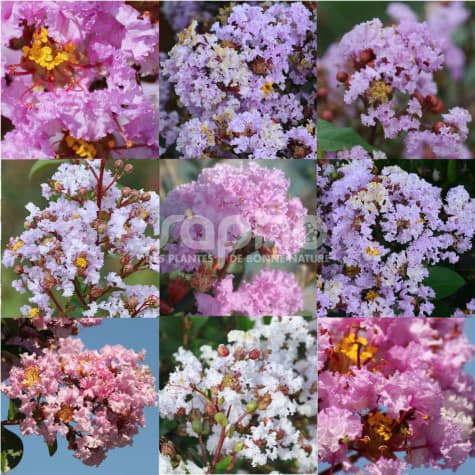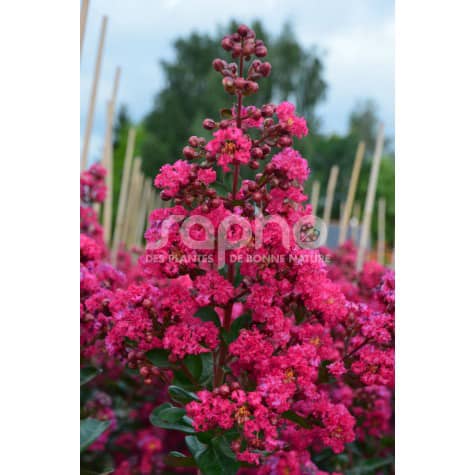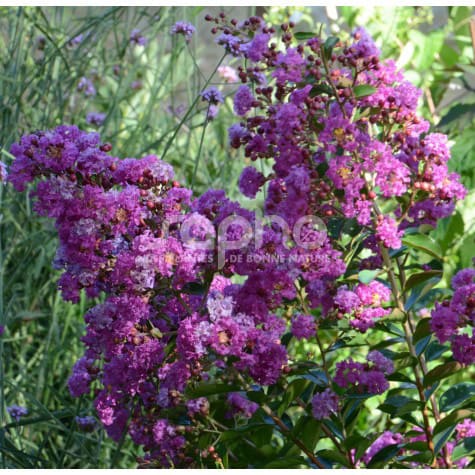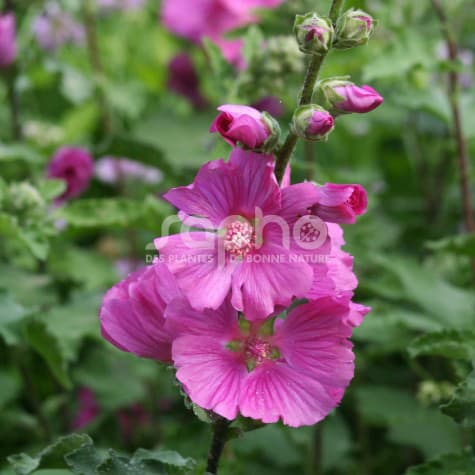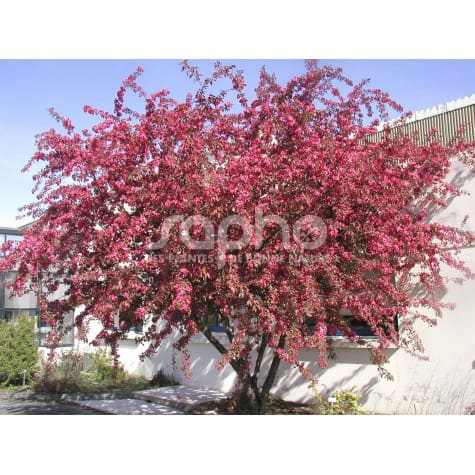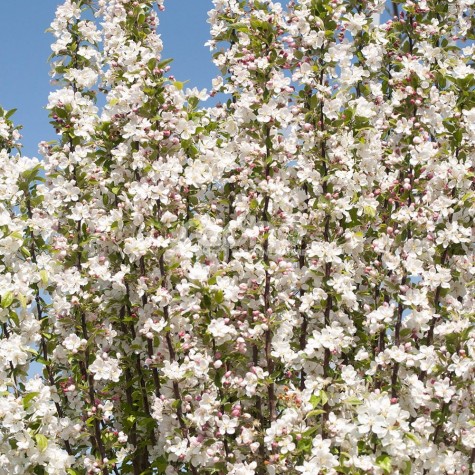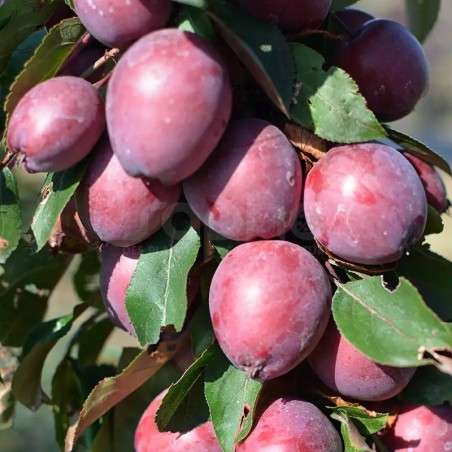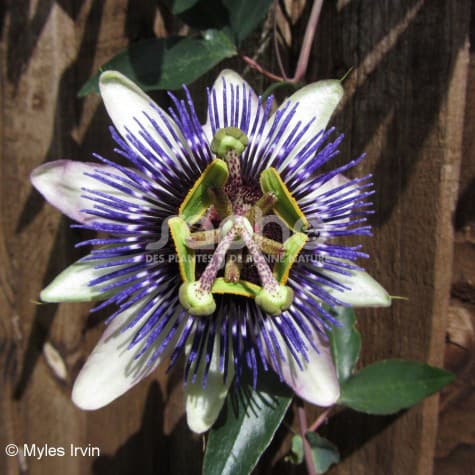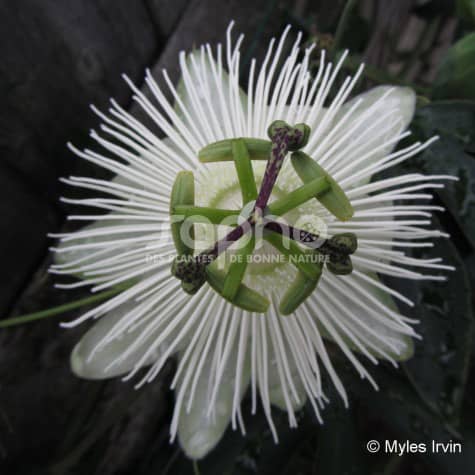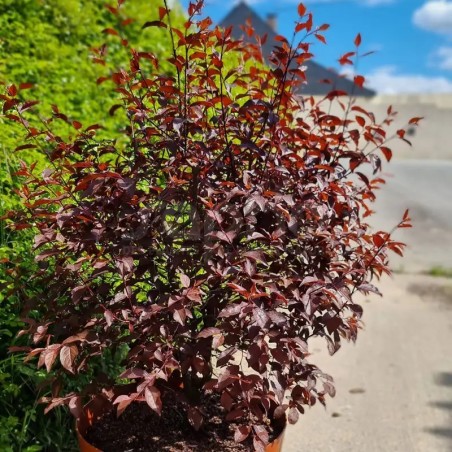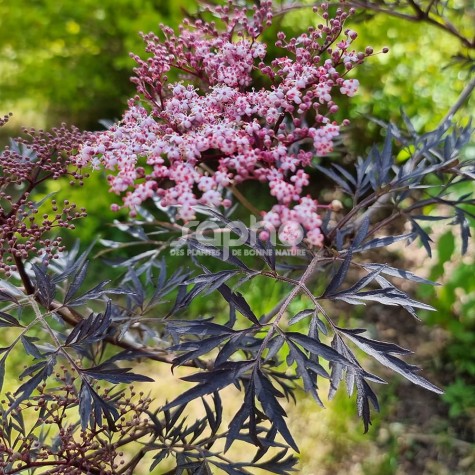The earliest variety of the INDIYA CHARMS® range.
The earliest cultivation of this range offers a cameo of pretty white to mauve coloured flowers and has small leaves and a dense shape.BRAISE D'ÉTÉ®, CAMAÏEU D'ÉTÉ®, FUCHSIA D'ÉTÉ® and VIOLET D'ÉTÉ® are the four varieties of the INDIYA CHARMS® range of our program. They offer pretty shades of mauve, violet, pink and red, adding bright summer colours to shrub beds and mixed hedges. Stem-grafted, in pots or in the ground, they decorate any entrance, terrace or, more traditionally, can be planted in a row.They can also be trained along a south facing wall.
Filter By
Foliage
Position
Where to find Sapho plants ?
For young plants
You will find the names of Sapho-licensed nurserymen at the bottom of each variety sheet.
For available plants
Please ask your nursery suppliers.
Each licensed propagator is free to market his young plants to all his customers.
Categories
Menu
All our varieties
The fuchsia coloured lilac of the INDIYA CHARMS® rangeThe young red shoots make room for big shiny leaves, purple green to bronze, depending on the conditions. The early flowers bloom as very thick fuchsia coloured, nearly red thyrses.BRAISE D'ÉTÉ®, CAMAÏEU D'ÉTÉ®, FUCHSIA D'ÉTÉ® and VIOLET D'ÉTÉ® are the four varieties of the INDIYA CHARMS® range of our program. They offer pretty shades of mauve, violet, pink and red, adding bright summer colours to shrub borders and mixed hedges. Stem-grafted, in pots or in the ground, they decorate any entrance, terrace or, more traditionally, can be planted in a row.They can also be trained along a south facing wall.
Bright violet in the INDIYA CHARMS® range
This strong growing variety offers early very bright violet flowers, contrasting with the gold-yellow stamens.BRAISE D'ÉTÉ®, CAMAÏEU D'ÉTÉ®, FUCHSIA D'ÉTÉ® and VIOLET D'ÉTÉ® are the four varieties of the INDIYA CHARMS® range of our program. They offer pretty shades of mauve, violet, pink and red, adding bright summer colours to shrub borders and mixed hedges. Stem-grafted, in pots or in the ground, they decorate any entrance, terrace or, more traditionally, can be planted in a row.They can also be trained along a south facing wall.
Trophies:
Bronze medal at Plantarium 2013 (Boskoop - NETHERLANDS)
A bright lavatera for the beginning of summer.Deriving from the Lavatera olbia 'Rosea', CHAMALLOW® shows a certain orginality compared to the classic varieties of Lavatera. This selection has a particularly compact, bushy and rounded growth. Its light green, slightly velvety foliage stays healthy. These qualities make it interesting for growing in containers.In July - August, the straight branches have deep pink flowers. They are of medium size with even darker pink stripes.To be planted in flowering hedges or in beds, together with shrubs and perennials.
An ornamental apple tree for the town or the country.This tree is of semi-spreading shape, reaching a height of 3 to 4meters in ten years and has a harmonious form, which it keeps without the necessity of pruning. Its leaves and branches are purple.The violet-pink flowers blossom in April - May along the whole length of the branches, and the purple fruits appear in autumn.COCCINELLA® has also been chosen by the INRAE selectors for its resistance to the major diseases such as fire blight, scab and mildew.Grown to a full standard, COCCINELLA® has the asset of a small town tree; grown in clumps, its foliage and fruit are appreciated in mixed countryside hedges or in shrub borders.
Naturally a STAR since its creation.
This tree is of semi-spreading growth, reaching a height of 3 to 4m in ten years and has a harmonious shape, which it keeps without the necessity of pruning. Its foliage is green.
In April, 'Evereste' covers itself in bright pink flower buds, which bloom as pure white bouquets of flowers. The quality and the abundance of its pollen make it an ideal pollinator, precious for fruit growers (in proportion of 6 - 8% of all varieties of early or semi-early flowering).
The cherry sized fruits are orange with thin red stripes. They apprear in autumn and have the particularity to last well into winter.
'Evereste' has also been chosen by the INRAE selectors for its resistance to the major diseases such as fire blight, scab and mildew.
Nearly a million plants have been sold in Europe since its creation in 1974.
Its ornamental qualities, its reasonable dimensions and its easy care make it an excellent small urban tree if grown full standard; in clumps it is very valuable in the composition of flowering hedges and in shrub borders.
A landmark in the garden!
A columnar habit when young, evolving into a pyramidal form
Young, purple foliage that turns dark green
Spectacular intense red flowering in bud, evolving to carmine pink
Numerous plum-sized, purplish-red fruits with red flesh persist until late autumn
Its initial columnar shape evolves into a pyramid shape with age, making it ideal for small spaces
Walls, trellises and pots : big decorative flowers from May to the frosts
Vigorous and spectacularly climbing, this polyploid hybrid attaches itself thanks to its tendrils.
Evergreen in mild winter regions, semi evergreen in colder areas, it must be protected at temperatures of under -8°C.
The leathery foliage, made up of 3 to 5 lobes with pronounced veins, is shiny and of an attractive dark green.
From May until the frosts several flowers appear daily. They can reach 13 cm in diameter, have a white corolla with shades of lilac and the filament crowns are beautifully dark violet purple and blue. The scented flowers last several days.
Fruits are rare.
Very decorative during the whole summer, RIVERSIDE® 'Damsel's Delight' covers walls and trellises and can also be pot-grown.
Walls, trellises and pots : a graphic passion flower from May to the frosts
Vigorous and spectacularly climbing, this polyploid hybrid attaches itself thanks to its tendrils.
Evergreen in mild winter regions, semi evergreen in colder areas, it must be protected during temperatures of under -8°C.
The large foliage, formed of 3 to 5 lobes with pronounced veins, is shiny and of an attractive dark green.
From May until the frosts several flowers appear daily. They can reach 12 cm in diameter and surprise us with their pure white petals, sepals and filament crowns. The 5 green stamens and the 3 dark stigmata stand out well from the white. The scented flowers last several days. They are followed by decorative, non-edible yellow-orange fruits of about 6 cm.
Very decorative and graphic during the whole summer, RIVERSIDE® 'Snow Queen' decorates walls and trellises and can also be grown in pots.
A chocolate-red Prunus for small spaces
A compact, branching habit from a young age
An attractive dark chocolate-red foliage that turns black-red in summer
Creamy white spring flowers that contrast with the foliage
Very hardy and only half the size of the 'Nigra' variety, making it ideal for small spaces and container growing
Purple and lacinated, a very decorative elder
This elder is very elegant thanks to its big, deep purple, nearly black, finely dissected leaves. The young shoots are green. The shrub tolerates half shade, but planting it in full sun, emphasizes the beautiful colour of the foliage. Its growth is medium.In June, BLACK LACE is covered in flat, pink buds, getting paler at the opening stage to become a creamy white. The contrast to the dark foliage is remarkable.At the end of summer, the dark purple then black berries are appreciated by the birds.Its purple and lacinated foliage, its abundant flowers and berries make it an decor for the garden. BLACK LACE should be planted individually or in free growing shrub-hedges, together with evergreens, for example.
Dark purple elder with an upright and thick shape.BLACK TOWER has an interesting upright and naturally thick shape.Its young shoots are green. Then the large-sized foliage becomes deep purple brown, covering the plant from the base upwards.In June - July, from a very young age, nearly at every node, numerous quite small pink and white flowers open, contrasting with the foliage. Black fruit appear in the autumn.

